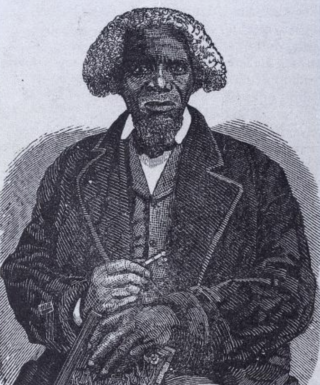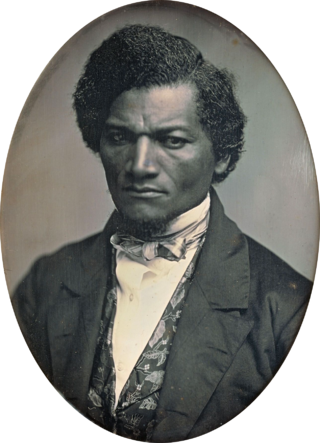Related Research Articles

The American Colonization Society (ACS), initially the Society for the Colonization of Free People of Color of America, was an American organization founded in 1816 by Robert Finley to encourage and support the repatriation of freeborn people of color and emancipated slaves to the continent of Africa. It was modeled on an earlier British Committee for the Relief of the Black Poor's colonization in Africa, which had sought to resettle London's "black poor". Until the organization's dissolution in 1964, the society was headquartered in Room 516 of the Colorado Building in Washington, D.C.

The Great Mississippi Flood of 1927 was the most destructive river flood in the history of the United States, with 27,000 square miles (70,000 km2) inundated in depths of up to 30 feet (9 m) over the course of several months in early 1927. The period cost of the damage has been estimated to be between $246 million and $1 billion, which ranges from $4.2–$17.3 billion in 2023 dollars.
David Walker was an American abolitionist, writer, and anti-slavery activist. Though his father was enslaved, his mother was free; therefore, he was free as well. In 1829, while living in Boston, Massachusetts, with the assistance of the African Grand Lodge, he published An Appeal to the Colored Citizens of the World, a call for black unity and a fight against slavery.
Josephine St. Pierre Ruffin was a publisher, journalist, civil rights leader, suffragist, abolitionist, and editor of the Woman's Era, the first national newspaper published by and for African American women.
Seneca Village was a 19th-century settlement of mostly African American landowners in the borough of Manhattan in New York City, within what would become present-day Central Park. The settlement was located near the current Upper West Side neighborhood, approximately bounded by Central Park West and the axes of 82nd Street, 89th Street, and Seventh Avenue, had they been constructed through the park.
African Americans are an ethnic group in the United States. The first achievements by African Americans in diverse fields have historically marked footholds, often leading to more widespread cultural change. The shorthand phrase for this is "breaking the color barrier".

African American newspapers are news publications in the United States serving African American communities. Samuel Cornish and John Brown Russwurm started the first African American periodical, Freedom's Journal, in 1827. During the antebellum period, other African American newspapers sprang up, such as The North Star, founded in 1847 by Frederick Douglass.
The New York Manumission Society was founded in 1785. The term "manumission" is from the Latin meaning "a hand lets go," inferring the idea of freeing a slave. John Jay, first Chief Justice of the Supreme Court of the United States as well as statesman Alexander Hamilton and the lexicographer Noah Webster, along with many slave holders among its founders. Its mandate was to promote gradual emancipation and to advocate for those already emancipated. New York ended slavery in 1827. The Society was disbanded in 1849, after its mandate was perceived to have been fulfilled. the society battled against the slave trade, and for the eventual emancipation of all the slaves in the state. In 1787, they founded the African Free School to teach children of slaves and free people of color, preparing them for life as free citizens. The school produced leaders from within New York's Black community.
Mutual aid is an organizational model where voluntary, collaborative exchanges of resources and services for common benefit take place amongst community members to overcome social, economic, and political barriers to meeting common needs. This can include physical resources like food, clothing, or medicine, as well as services like breakfast programs or education. These groups are often built for the daily needs of their communities, but mutual aid groups are also found throughout relief efforts, such as in natural disasters or pandemics like COVID-19.

Elizabeth Hobbs Keckley was an African-American seamstress, activist, and writer who lived in Washington, D.C. She was the personal dressmaker and confidante of Mary Todd Lincoln. She wrote an autobiography.

Thomas Dalton (1794–1883) was a free African American raised in Massachusetts who was dedicated to improving the lives of people of color. He was active with his wife Lucy Lew Dalton, Charlestown, Massachusetts, in the founding or ongoing activities of local educational organizations, including the Massachusetts General Colored Association, New England Anti-Slavery Society, Boston Mutual Lyceum, and Infant School Association, and campaigned for school integration, which was achieved in 1855.
The Jim Crow laws were state and local laws introduced in the Southern United States in the late 19th and early 20th centuries that enforced racial segregation, "Jim Crow" being a pejorative term for an African American. The last of the Jim Crow laws were generally overturned in 1965. Formal and informal racial segregation policies were present in other areas of the United States as well, even as several states outside the South had banned discrimination in public accommodations and voting. Southern laws were enacted by white-dominated state legislatures (Redeemers) to disenfranchise and remove political and economic gains made by African Americans during the Reconstruction era. Such continuing racial segregation was also supported by the successful Lily-white movement.

Charles Bennett Ray was a prominent African-American minister and abolitionist who owned and edited the weekly newspaper The Colored American. Born in Massachusetts, he spent most of his career and life in New York City.

John C. Bowers, Jr. was an African American entrepreneur, organist and vestryman at St. Thomas African Episcopal Church, and a founding member of the first Grand United Order of Odd Fellows for African Americans in Pennsylvania. He was active in the anti-slavery movement in Philadelphia, and involved in the founding of several organizations including the Pennsylvania Anti-Slavery Society. "A fervent abolitionist and outspoken opponent of colonization, [he] was much in demand as a public speaker."

Eva del Vakia Bowles (1875–1943) was an American teacher and a Young Women's Christian Association organizer in New York City. When she began working at the New York City segregated YWCA in Harlem, she became the first black woman to be a general secretary of the organization. For eighteen years she organized black branches of the YWCA and expanded their services to community members. She received recognition from former president Theodore Roosevelt for her work during World War I on behalf of the segregated Y.

Ada Crogman Franklin was an American playwright, journalist, educator, and publisher of The Kansas City Call newspaper from 1955 to 1983.

Philip Augustus White (1823–1891) was an American pharmacist, aristocrat, advocate, and school board administrator. He was the Secretary for the New York Society for the Promotion of Education Among Colored Children and the first African American member of the Brooklyn Board of Education.

Greensbury Washington Offley was an American slave narrative author and minister. Born into slavery in Maryland and eventually freed, Offley wrote A Narrative of the Life and Labors of the Rev. G. W. Offley, a Colored Man, Local Preacher and Missionary (1859), one of only six slave narratives published in Connecticut.

The Fifth of July is a historic celebration of an Emancipation Day in New York, marking the culmination of the state's 1827 abolition of slavery after a gradual legislative process. State law passed under Governor Daniel D. Tompkins a decade earlier had designated Independence Day, the Fourth of July, as when abolition would take effect, but the danger of racist violence led African Americans to celebrate on the following day instead.
The American League of Colored Laborers was a short-lived labor union established in New York City in 1850. It is notable for being the first union created for African Americans in the United States. Social reformer Frederick Douglass assisted in organizing the group, which held its first meeting at the Mother African Methodist Episcopal Zion Church on June 13, 1850. Its initial officers included Samuel Ringgold Ward as president, Douglass and Lewis Woodson as vice presidents, and Henry Bibb as secretary, and during the first meeting, an executive committee was organized that was composed of several notable social reformers and abolitionists. In addition to union activities, the league was also envisioned to serve as a benefit society for black tradespeople and entrepreneurs, and to this effect, its leaders planned to establish a mutual savings bank and hold an industrial fair. Despite these plans, the union faltered shortly after its creation, and it would take until 1869 that the first successful national labor union for African Americans, the Colored National Labor Union, was formed.
References
- ↑ "MAAP | Place Detail: African Society for Mutual Relief". Archived from the original on 2020-11-04. Retrieved 2020-11-30.
- ↑ "African corporation over a century old". The Pittsburgh Courier. February 3, 1912. p. 1. Retrieved 2020-11-30.
- ↑ Harris, Leslie M. (2004). In the Shadow of Slavery: African Americans in New York City, 1626-1863. University of Chicago Press. pp. 86–90. ISBN 978-0-226-31775-5.
- ↑ Jaynes, Gerald D. (2005). Encyclopedia of African American Society. SAGE. pp. 491, 570. ISBN 978-0-7619-2764-8.
- ↑ "The New York African Society for Mutual Relief (1808-1860) •". 22 January 2011. Archived from the original on 12 May 2021. Retrieved 30 November 2020.